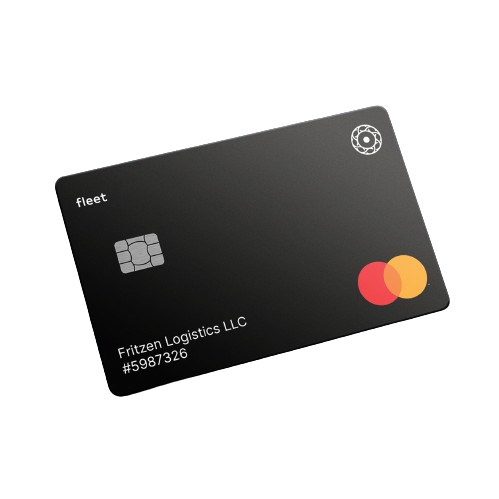Your Guide: How to Start a Delivery Business With Contract Drivers
The rise of both eCommerce and delivery services has undeniably changed the freight and courier industry. Today’s consumers can enjoy ordering a meal that arrives still-hot to their door, or purchasing a product and having it delivered by morning.
Naturally, this shift in consumer experience — coupled with a rampant increase in demand for delivery services has created countless opportunities for savvy entrepreneurs looking to break into this emerging market.
If you count yourself among them, you may be curious about how to start a delivery business with contract drivers and we created this guide to help you do just that.
Step 1: Narrow The Focus of Your Delivery Business
For small local businesses and major retailers, devising an affordable, reliable, and speedy delivery schema is non-negotiable. No matter the industry, every company needs its products to get from A to B smoothly.
That’s where you come in.
You’ll find various niches within the freight and courier industry. Some common ones to capitalize on include:
- Courier services
- Meal kit delivery
- Food delivery
- Long-haul freight
- Product delivery
- Laundry and dry cleaning delivery
- Pharmaceutical delivery
- Grocery delivery
- Liquor or marijuana delivery
As you consider your options, you’ll discover every niche has unique requirements to get the business off the ground. With that, each category can significantly impact your startup costs, hiring needs, and compliance requirements.
For instance, if you want to create a long-haul freight business with contracted owner-operators, you’ll need:
- Drivers who have a CDL driver’s license
- A place to store your fleet if you decide to lease or own your trucks
- A dispatching team to help you with logistics, routing, delivery management, and client strategy
- A maintenance team to perform preventative maintenance
Step 2: Create a Business Plan
Even with an ambitious idea and a relentless work ethic, starting a business can be enormously challenging. Many startups struggle to succeed—one in five small businesses won’t make it past their first year of operation.
But the realities of starting a business shouldn’t dissuade you from pursuing this course—rather, it should motivate you to carefully plan and strategize with a carefully considered business plan.
Think of your business as a roadmap that can guide you through each stage of starting, running, and growing your delivery business. As Business News Daily notes, “Writing a business plan helps you understand more clearly what you need to do to reach your goals. The finished business plan also serves as a reminder to you of these goals. It’s a valuable tool that you can refer back to, helping you stay focused and on track.”
To that end, a business plan for a delivery business should cover the following:
- Executive summary – Provides an overview of the plan, including the mission statement, the services you will provide, and why the company will succeed.
- Company description – Gives a comprehensive description of the business, namely, its services, goals, and prototype customers.
- Market analysis – Covers the target market, the competitors within the space, the primary pain points, the demographics of the consumer base, and potential growth opportunities.
- Management team – Describes the people who will be involved in the daily operations of the delivery business.
- Financial plan – Forecasts the expense budget, capital requirements, sales opportunities, and break-even analysis.
- Operational plan – Details the daily workflows the business will follow to reach its ultimate goals.
- Marketing plan – Addresses how you’ll encourage potential clients to learn about and sign up for your delivery services.
Remember, even if you start a delivery business with contract drivers, capital investments will still be required to get the business up and running. You may need to take out a loan or find investors willing to finance the endeavor.
But to receive a loan or a capital infusion, you must first convince a creditor or financier that the business has the potential to provide ROI. A business plan can convince lenders that you should be taken seriously as both an entrepreneur and a trusted borrower.
Step 3: Find A Partner for Your Delivery Service Company
The major players in the freight industry—such as UPS, FedEx, and Amazon—will employ their own in-house drivers. But they may also contract out jobs to partners.
For a budding delivery business, taking this route can help you establish your operations without having to first find and win over clients. With a major partner, you could have a consistent demand for package delivery.
Today, the two top options available are:
Step 4: Register the Business
To legally operate a delivery business with contract drivers, you must satisfy several registration requirements. Be sure to prioritize the following items:
- File a fictitious business name – You must register your business in the local county clerk recorder’s office and with the secretary of state’s office.
- Select your business entity – To satisfy both state and federal tax obligations, you’ll need to determine the type of business you’ll operate as. This decision will have ramifications on your taxation and liability status. That said, most delivery services opt for a limited liability company (LLC).
- Register the business – Your next task is registering the business and applying for an employee identification number (EIN). This nine-digit number is issued by the IRS and acts like a business’ social security number.
- Acquire insurance – Delivery service businesses carry plenty of inherent risks, so it’s critical to protect yourself with insurance. Depending on your niche, you may require general liability insurance, special commercial auto insurance, cargo insurance, and workers' compensation. What is fleet insurance? Learn more to see how fleet insurance can benefit your business.
Taking these steps ensures that you’re operating the business promptly and legally.
Step 5: Enlist Contract Drivers
Hiring contract drivers is often cheaper than hiring drivers in-house. Since they operate as independent contractors, you won’t need to purchase vehicles, acquire vehicle insurance, pay Social Security or Medicare, or cover repairs. Such costs are the responsibility of the owner-operator.
While there are cost savings involved with hiring an independent contractor, you’ll also need to spend more energy finding and enlisting their services.
Do you have contracts available? Then you’ll need to advertise those by:
- Posting job ads on social media
- Posting ads on industry-specific job boards
- Working with staffing agencies
- Asking for delivery driver referrals
Once your candidates have been selected, you should ensure they have a vehicle, a commercial driver’s license, a strong driving record, a clean criminal history, and well-rounded experience in the industry.
Your ideal driver should display the requisite skills, character, and work ethic.
Step 6: Train Your Drivers
Even if you’ve established an experienced force of drivers, they’ll still need to be trained in your company system. This training should cover:
- Safety training – Apart from working in an inherently risky occupation, your drivers are the face of your business, and you could be legally liable for their actions behind the wheel. All it takes is one accident to jeopardize your business’ reputation, so ensure every one of your drivers undergoes mandatory delivery driver safety training and education.
- Last-mile processes – To ensure that deliveries are made quickly and accurately, drivers should be versed in your business's entire front-to-end systems and their specific responsibilities within the process. That way, you can help prevent the last mile delivery problem.
- Customer service – Depending on your delivery business model, your drivers may need to interact with customers directly. If that’s the case, they’ll be a reflection of your brand. Therefore, they should be prepared, polite, and responsive to customer needs.
Ultimately, your drivers are both the face of the company and the product itself. By investing in training, you position the company for success.
Step 7: Use a Fuel Card
Depending on how you structure your business operations, you may be expected to cover the driver’s fuel costs. A fleet fuel card can help optimize the process of purchasing fuel and tracking expenses.
Fuel cards can provide myriad benefits to your courier business, including:
- Discounts – Some fuel cards will come with exclusive per-gallon discounts on fuel, with zero spend limits.
- Universality – Certain fuel cards will be universally accepted at both major gas stations and mom-and-pop fuel shops. These can be used for all business-related expenses.
- Better expense control – Company fuel cards allow you to set credit limits and purchasing restrictions, so drivers don’t take advantage of the card for personal gain or commit fuel card fraud.
- Fleet management – Top fleet fuel cards provide real-time reporting and courier driver insights.
- Instant payroll processing – Ideally, your card should be capable of sending funds instantly with unlimited transfers, automated 1099s, and payroll tracking.
If you do pay for fuel, it will probably represent your largest operating expense. Knowing that, be sure to register in advance to gain full control of your fleet’s finances before your business hits the ground running.
{{CTA}}
Launch Your Delivery Business with AtoB
The delivery business is booming. There’s never been a better time to start a courier service with contract drivers, and now that you know the initial steps, it’s time to get to work.
One of the challenges of learning how to manage a delivery business is mitigating fuel costs. At AtoB, our hyper-secure fleet fuel cards come with a centralized management hub to serve as the motherboard of your operation and offers virtual payment solutions.
Start building a solid foundation for your shipping enterprise by learning more about our fleet fuel cards and completing your application today.
Sources:
Entrepreneur. The True Failure Rate of Small Businesses.
https://www.entrepreneur.com/article/361350
How to Write a Business Plan. Guide to Creating a Business Plan With Template.
https://www.businessnewsdaily.com/5680-simple-business-plan-templates.html
IRS. Apply for an EIN.
https://www.irs.gov/businesses/small-businesses-self-employed/apply-for-an-employer-identification-number-ein-online
Get started with AtoB

Reviewed by
Vedant Khamesra is the driving force behind product management at AtoB. Specializing in strategic partnerships, SMB solutions, and new product development, Vedant seamlessly navigates P&L responsibilities while leading product execution and strategy. He is fueled by AtoB's mission to empower truckers and fleets with intelligent financial tools and services, making their lives easier and more rewarding.
Start saving today


